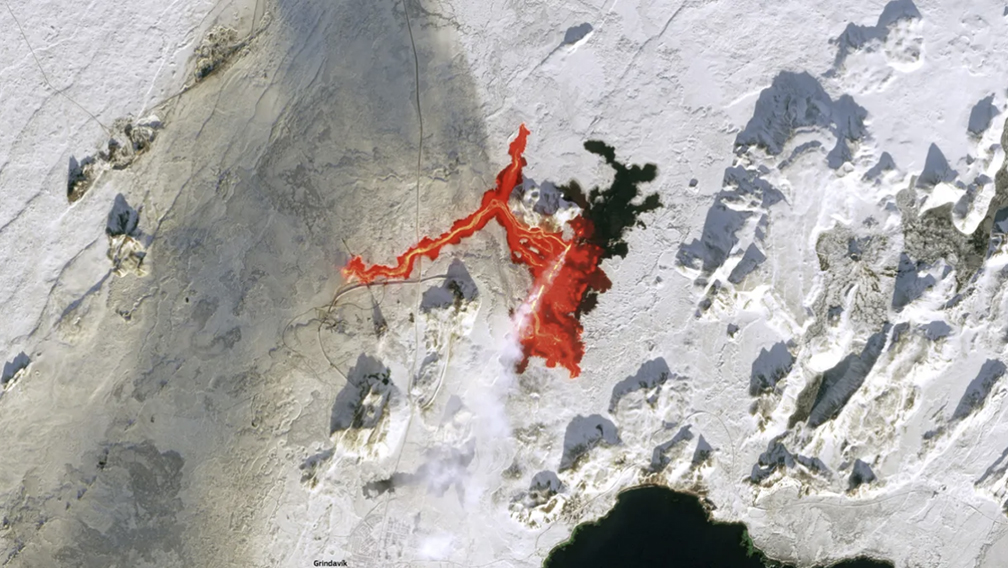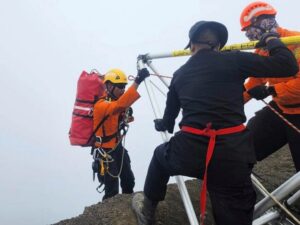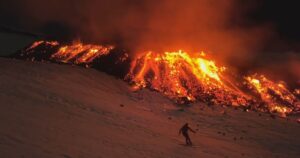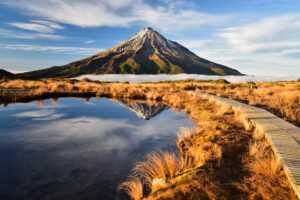Since late 2023, earthquakes and volcanic eruptions have hit Iceland regularly. At one point in November, over 2,000 earthquakes wracked the country in just 48 hours. Then in December, the Reykjanes Peninsula suffered the first of three major eruptions. The second occurred on Jan. 14 and the third was last Thursday, Feb. 8.
As the volcano in southwestern Iceland erupted, it caused a giant fissure to open in the ground, while a 15-kilometer magma tunnel formed under the Reykjanes Peninsula. When the fissure opened, high-pressure magma from the underground river began to spew out.
Over the last three weeks, researchers have worried about the amount of magma building up underground. The magma dike was getting longer and rising. Of special concern was the sheer speed of magma flowing into it. The flow rate was a staggering 7,400 cubic meters per second, the equivalent of three Olympic sized swimming pools of magma every second. It is the highest rate anywhere in the world for such an event.
“We can have higher rates in very large eruptions. But I am not aware of higher estimates of magma flowing into a crack in the surface,” Freysteinn Sigmundsson from the University of Iceland told New Scientist.
Town evacuated
Researchers have closely monitored the volcanic activity using ground sensors and satellites. When the fissure opened in November, they were able to calculate the rate at which the magma flowed upwards. As hundreds of earthquakes hit the region last week, they were sure another eruption was building at the fissure. Luckily, everyone from the nearby town of Grindavik had already fled in December.
Much of the region relies on geothermal water for heating. The lava tore through a major supply pipeline. Several communities remain without heat or hot water, and the famous Blue Lagoon thermal spa had to be evacuated.
Drone flights by the Icelandic Met Office have confirmed that no eruptions have occurred since Feb. 9, and seismic sensors no longer detect volcanic tremors. This suggests that the eruption is ending, but concerns remain about the damage caused by the lava flow and gas pollution.
Iceland is incredibly active geologically. Sitting on the mid-Atlantic ridge, and on the border of tectonic plates, the modest-sized island has 32 active volcanoes and 600 hot springs. A volcano erupts on average every five years, but until 2021, there had been none in the Svartsengi system of southwest Iceland for almost eight centuries.

A dramatic satellite view of the Feb. 8 lava flow on the Reykjanes Peninsula. Photo: European Union, Copernicus Sentinel-2 imagery





